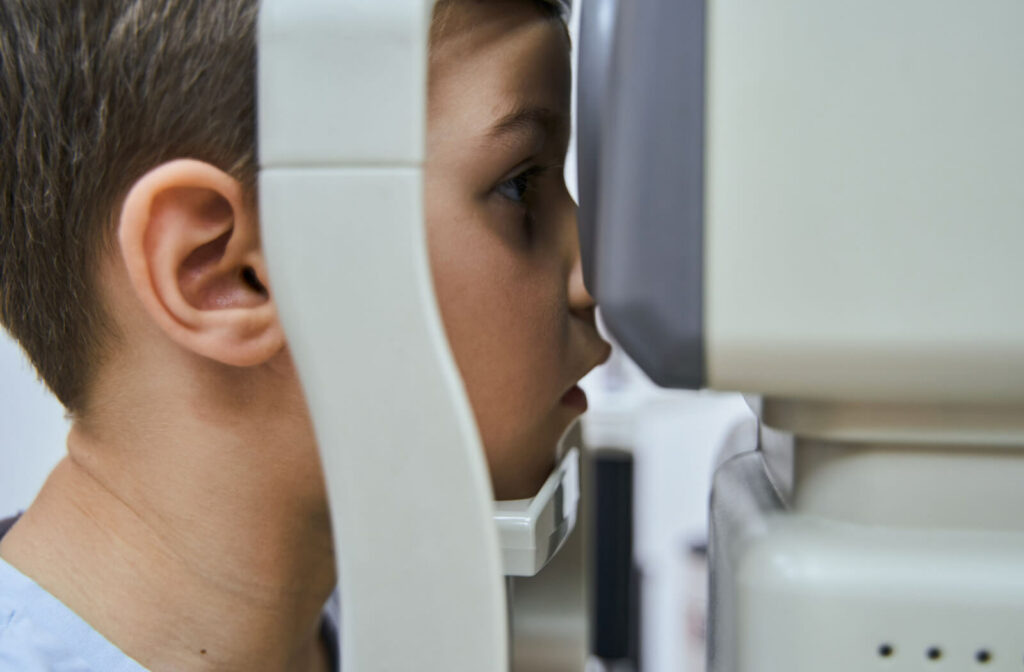Fitting Contacts for Your Vision
Contact lenses can be a convenient vision correction option for many patients. You can experience enhanced sight without frames in your field of view. But, like traditional glasses, you need custom lenses measured for your vision needs and fitted to your unique eye shape.
So, before ordering your contacts, you first need to schedule a contact lens exam & fitting.
Glasses vs. Contact Lenses
Prescription eyeglasses and contact lenses correct vision in similar ways. However, crucial differences are reflected in the types of measurements and fit needed.
Light is an essential part of how we see. We can experience blurry or hazy vision when the shape of our eye causes a refractive error—where light is incorrectly focused (refracted) behind or in front of the retina (the light-sensitive tissue at the back of the eye). A prescription lens helps focus light directly on the retina.
The prescription lens’s shape, thickness, and position affect how the lens refracts light. For example, astigmatism occurs when the cornea or crystalline lens is shaped irregularly. The abnormal shape requires custom measurements to control how light is focused. The contact lens shape also needs a unique fit to prevent shifting on the eye’s surface.
With glasses, the lens position is fixed because of the frames. Contact lenses need features to help secure the position of the lens, such as toric lenses with thinner and thicker zones.
More severe refractive errors require thicker lenses. Therefore, eyeglasses for higher prescriptions can get thick and heavy. Although, having high-index lenses can help. However, contact lenses can be significantly thinner for the same degree of refractive error.
Eyeglasses have a minimum center thickness of 1.0 mm, yet the average contact lens center is less than 0.1 mm. This is because the distance between the lens and the eye impacts how thick the lens must be to change light focus effectively.
Typically, eyeglass lenses are about 12 mm away from the eye. On the other hand, contact lenses rest directly on the eye.
Glasses also need a greater surface area to provide appropriate lens power. Eyeglasses usually have an optic zone (the section that helps focus light) greater than 46 mm (1.8 inches) in diameter. The entire surface area of the lens is needed to help focus light.
Contact lenses, however, have an optic zone the same size as the pupil (about 9 mm). The outer skirt of a contact lens has no lens power; instead, it helps support lens comfort and fit. Of course, the optic zone must be measured to fit your pupil shape, as there can be variations.
Contact Lens Exam & Fitting
Determining the appropriate lens power, shape, and type for your contact lens starts with a contact lens exam. Your optometrist uses several assessments to create a custom fit.
Eye Measurements
During your contact lens exam, your optometrist will use various instruments to measure the shape of your eyes. Typically, a keratometer or a corneal topographer is used to measure eye curvature and cornea shape. Your optometrist will also measure the size of your pupil and iris so that the optic zone is positioned accurately.
Eye measurements help ensure your lens will fit comfortably on the cornea and support the accuracy of your prescription.
Prescription
Obtaining an up-to-date prescription is essential for receiving contact lenses appropriate for your vision needs. Even if you’ve recently had an eye exam, you may only have a prescription for eyeglasses. A contact lens prescription requires additional measurements, including the lens diameter and the back surface’s base (central) curve.
Tear Film Evaluation
Evaluating your tear film is essential for determining if you’re a good match for contact lenses. A poor tear film can lead to dry eye and increase the risk of infections while using contact lenses.
Trial Pair
You’ll need to test your new contact lenses—whether it’s your first pair or a prescription update. The adaptation period for an RGP (rigid gas permeable) lens is typically longer than for a soft contact lens. The trial pair allows patients to get used to a new fit, lens type, or prescription.
Follow-up Exam
A follow-up exam determines if the trial pair is a good fit or if another pair is necessary. Your optometrist will also check eye health and the alignment of the contact lens to assess the fit.
It can sometimes take a couple of trial pairs before you find the size, brand, or style that works best for your vision. Your comfort is a top priority, so your optometrist will work with you to find the best possible solution.
Looking for a Better Fit?
Your eye comfort can significantly impact your daily life. Contact lenses need to be custom-fitted to protect your eye health and provide accurate vision correction. If you have concerns about your prescription or fit, contact us to discuss your contact lenses.
We want our patients to feel confident and comfortable with their eye care at Griffin Optometric Group. If a better fit is possible, we’ll help you find it. Book an appointment for a contact lens exam & fitting today!



